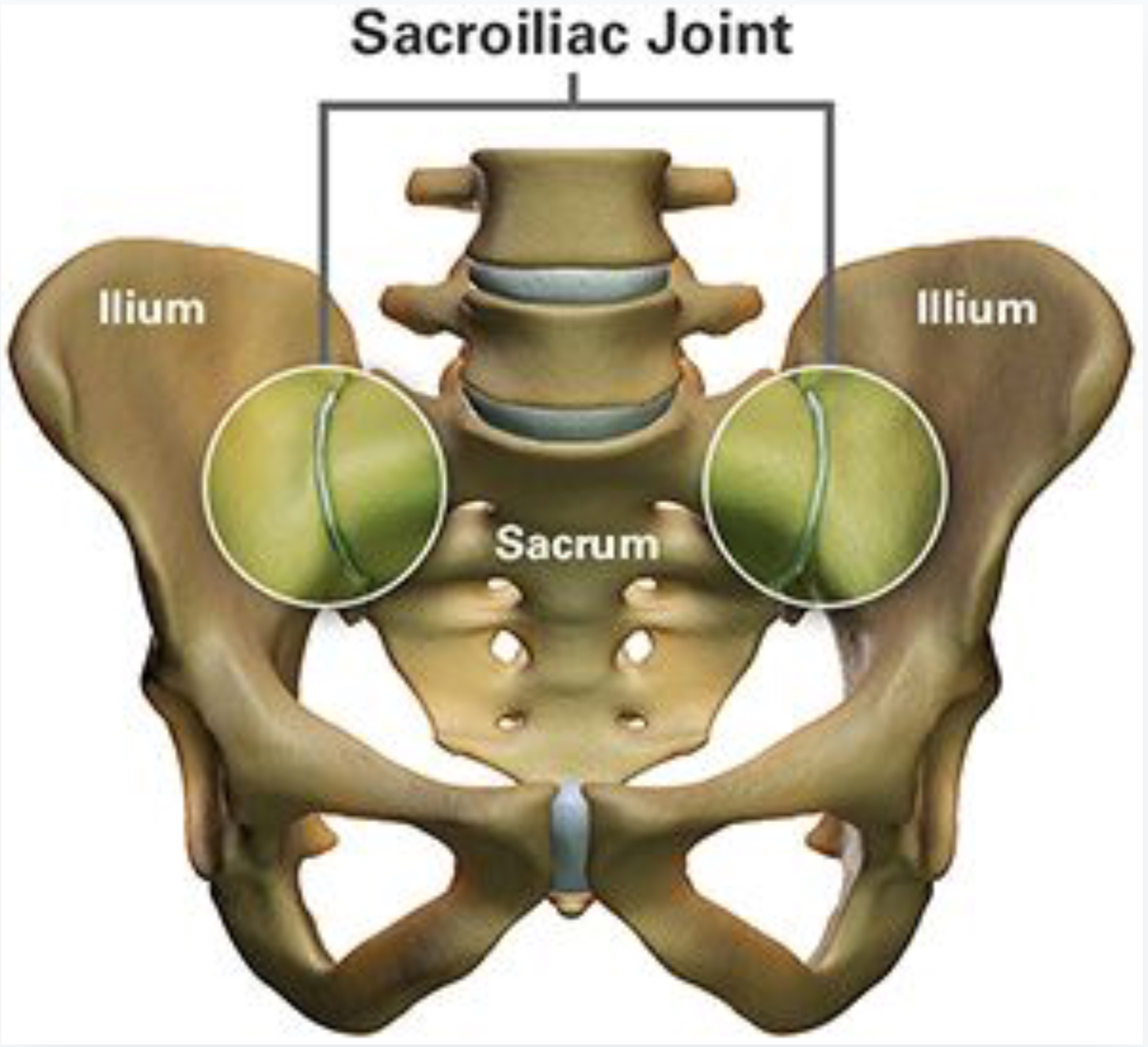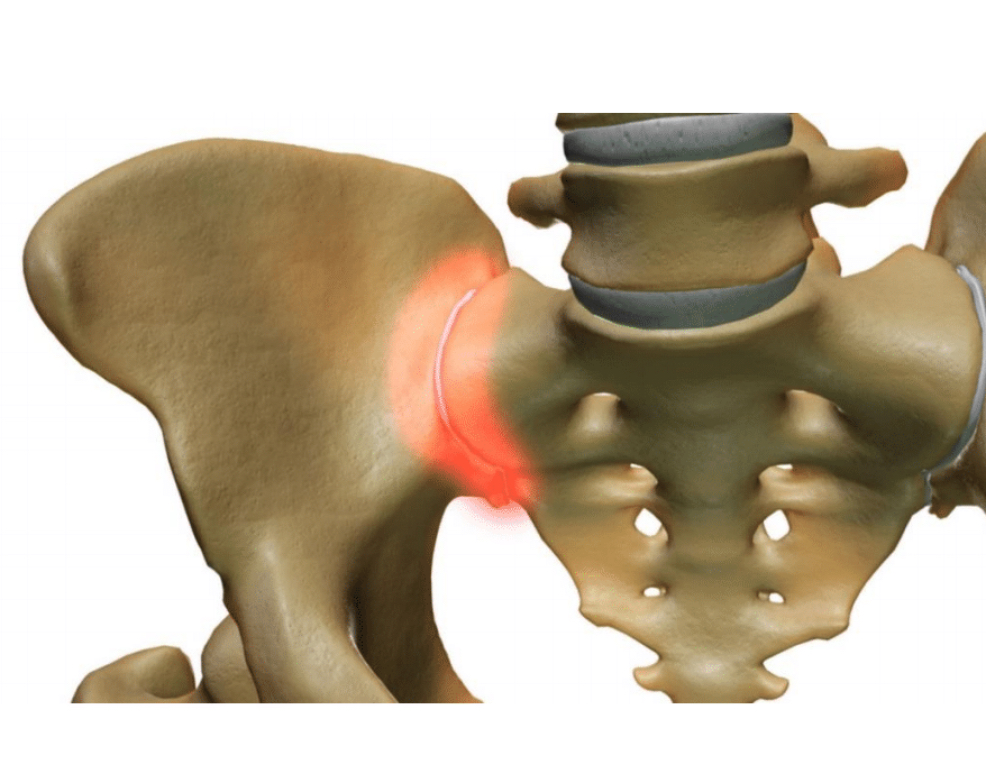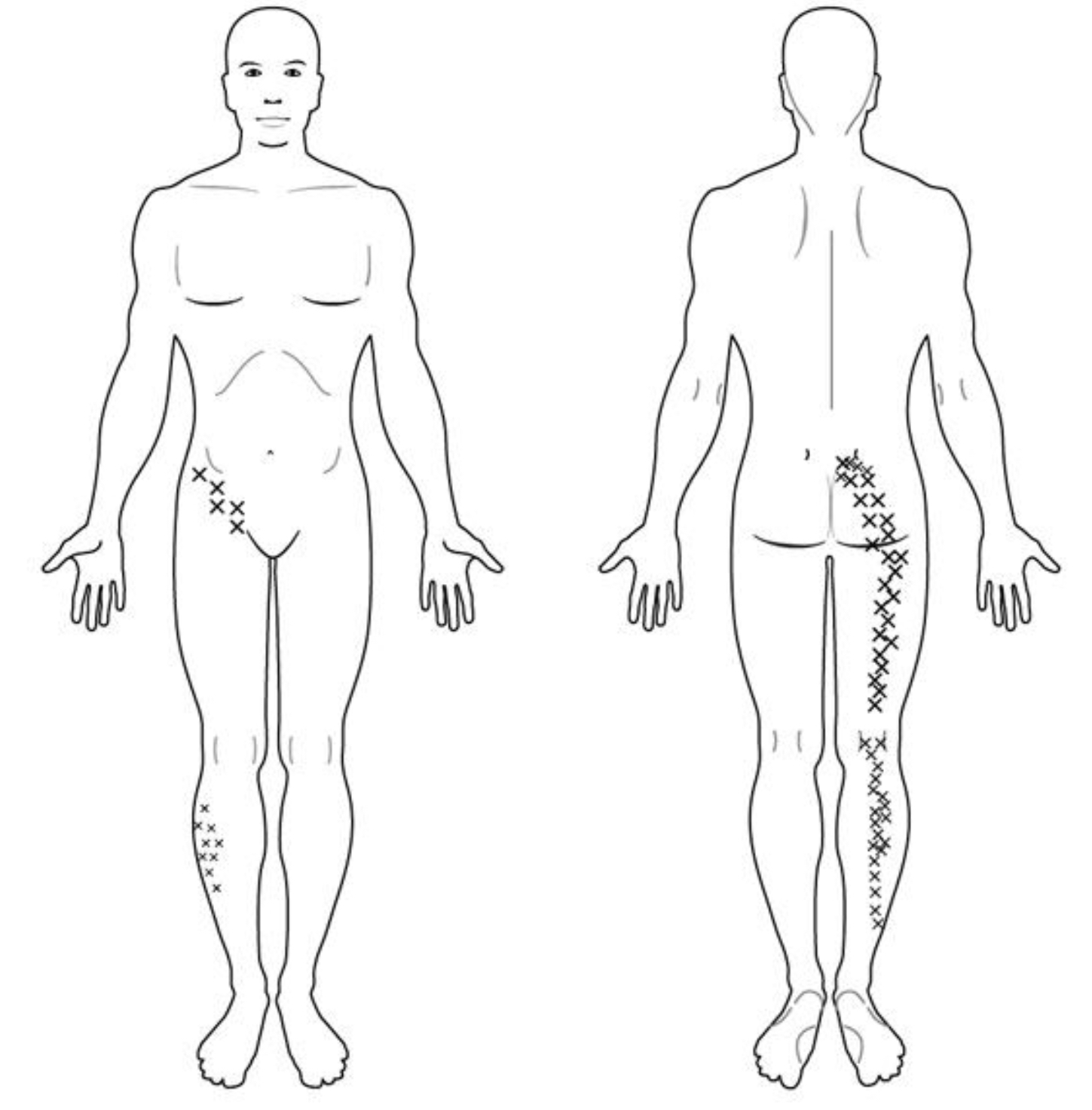Sacro-iliac joint dysfunction can cause pain that can be felt anywhere in the lower back, buttocks, groin, pelvis and in the legs. The pain caused by sacro-iliac joint dysfunction can significantly affect a patient’s life and day to day functioning.
The symptoms caused by sacro-iliac (SI) joint dysfunction can very similar to those caused by problems with the lumbar spine, hips and pelvis. Consequently, it can sometimes appear quite confusing and may be difficult to diagnose where the pain is actually originating from. Furthermore there maybe dual pathology – pain coming from both the SI joints and the spine. As a result sacro-iliac joint dysfunction is is often overlooked, under-diagnosed and therefore under-treated.
SI joint dysfunction is more common in women and it is reported that up to 20% of all low back pain actually originates from the SI joints rather than the spine and this has led to Mr Hilton taking a special interest in sacro-iliac joint dysfunction and its treatment.
The Sacro-iliac Joints
There are two sacro-iliac joints (SI Joints) and they are the located at the back of the pelvis where the lower part of the spine (the sacrum) joins with the pelvis (the ilium) and joins the spine to the pelvis. The two joints provide stability and support and as a result play a major role in absorbing impact when walking and lifting. Looking at the back, the SI joints are situated just below the waist (where the two dimples are).
The SI joints are held together by very strong ligaments and therefore they do not move a lot like other joints, for example the hips and knee joints. However, there is a very small amount of essential movement between the joints that allows the body’s normal flexibility; this movement increases in pregnancy to assist childbirth.
The SI joints can become painful when the ligaments become too loose or too tight and therefore they can be dysfunctional.


Common causes of sacro-iliac joint dysfunction:
- A fall or accident
- Pregnancy or childbirth
- Arthritis
- Hip surgery
- Spine surgery
- Hip and/or knee problems, for example arthritis
- Unequal leg lengths
- Anything else that results in the asymmetrical movement of the pelvis.
Symptoms of Sacro-iliac Dysfunction
As mentioned before, the symptoms of sacro-iliac joint dysfunction are similar to conditions of the spine and hip joints and can include:
Low back pain (below L4/5) which is usually only on one side but maybe bilateral – the photo to the right shows the typical site of the pain and this is called “ The Fortin Finger Test”.
- Pain down the leg on the side of the low back pain (the diagram demonstrates the most common sites of the pain).
- Altered sensation in the leg including numbness, tingling or weakness.
- Pelvis and buttock pain
- Hip and groin pain
- Feeling of leg instability (buckling or giving way)
The pain maybe made worse by doing certain things:
- Disturbed sleep patterns due to pain caused by lying on the affected side.
- Pain on sitting (unable to sit for too long and usually prefer to sit on one side)
- Pain on transitional movements (going from sitting to standing and getting in/out of the car).
- Pain on standing or weight-bearing on one leg.
- Pain on climbing stairs.
Diagnosis
History
Mr Hilton always takes a detailed history and performs an examination before making any diagnosis. The patient’s history and description of the pain is essential as many people suffering with sacro-iliac joint dysfunction often tell the same story which helps point towards the diagnosis. Whatever the initial cause, patients often find the pain is exacerbated by movement, have disturbed sleep and they often find walking on un-even ground very difficult. If you have had children, then you may have had bad low back pain during the pregnancy which may or may not improved after the birth and got worse on subsequent pregnancies.
Examination
Mr Hilton will perform a physical examination of the spine and hips to try and exclude these as a cause of the pain. In order to assess whether you have a sacro-iliac joint dysfunction, it is very important that the correct diagnostic tests are performed. Here are the most commonly and internationally accepted methods to diagnose SI joint dysfunction.
- Provocative tests
- Diagnostic Sacro-iliac joint injections
- Diagnostic imaging (X-rays, MRI and CT) is not usually required initially.
Provocative Tests
Provocation tests are designed to gently stress the sacro-iliac joints to see if the pain is reproduced – this is a very important part of the diagnosis and all 5 tests should be performed.
The 5 tests are called:
- Distraction
- Thigh thrust
- Compression
- Faber
- Gaenslen
These tests are shown in the diagram below.

Diagnostic Sacro-Iliac Joint Injections
A sacro-iliac joint injection is performed by Mr Hilton under X-ray guidance and in the operating theatre; as well as hopefully giving you some pain relief, they are incredibly helpful in the diagnostic procedure. If indeed the pain is originating from the sacro-iliac joint, then you should get significant pain relief in the first 8 hours from the local anaesthetic. Even if the pain comes back, which is can be very disappointing, it is very important to understand that this is a positive result. Mr Hilton then routinely performs a second diagnostic SI joint injection to confirm the diagnosis.
In addition to being used as a diagnostic test, the sacro-iliac joint injections are also very useful and effective treatment – this is discussed in more detail in the section on treatments.



The above photo demonstrates the ‘Fortin Finger Test” and the crosses on the diagram show where the pain caused by SIJ dysfunction is typically felt.
Conservative Management of Sacro-Iliac Joint Dysfunction
As with most conditions, non-surgical and conservative therapies should be tried first. However, we understand that many people have exhausted all options or they find exercise aggravates the symptoms. Therefore some people require more interventional treatments like therapeutic SI joint injections and some require SI joint fusions.
Conservative Treatments
- Pain killers
- Regular, specific exercise programme
- Manual therapies including physiotherapy, chiropractic treatment, massage.
- Sacro-iliac joint belt
- Sacro-iliac joint injections
Regular and specific SI Joint dysfunction exercise programmes aim to:
- Improve your core and pelvic muscle strength to improve the stability and support of the sacro-iliac joints
- Improve your posture
- Improve your walking pattern and this in turn will protect your other joints
- Improve and optimise the position of the sacroiliac joint
- Improve the mobility of the joints, muscles, tendons and ligaments around the SI joint
As a result, the pain caused by the sacro-iliac dysfunction can improve and can become more manageable.
Surgical Treatment
If all conservative treatments have not successfully managed your pain, you may decide to consider a sacro-iliac joint fusion.
What is the difference between S-I joint dysfunction and Sacroiliitis?
Sacroiliitis is inflammation of one or both of the sacro-iliac joints and is caused by inflammatory diseases, for example ankylosing spondylitis, psoriatic arthritis and inflammatory bowel diseases. The symptoms are very similar to sacro-iliac joint dysfunction and therefore it can be difficult to distinguish between. As always, the history is important and there is often a positive family history of inflammatory diseases. An MRI scan and blood tests can help confirm the diagnosis of Sacroiliitis.
Before having an MRI scan of the sacro-iliac joints, patients should stop taking anti-inflammatories/NSAIDs (eg ibuprofen, naproxen, diclofenac, meloxicam). The MRI scan can show any inflammation around the joints which is usually present in sacro-iliitis.
Blood tests are often, but not always, positive for HLA-B27 (an inflammatory marker in the blood).
The treatments for Sacroiliitis are different to Sacro-iliac joint dysfunction and therefore it is essential that the correct diagnosis is made.


